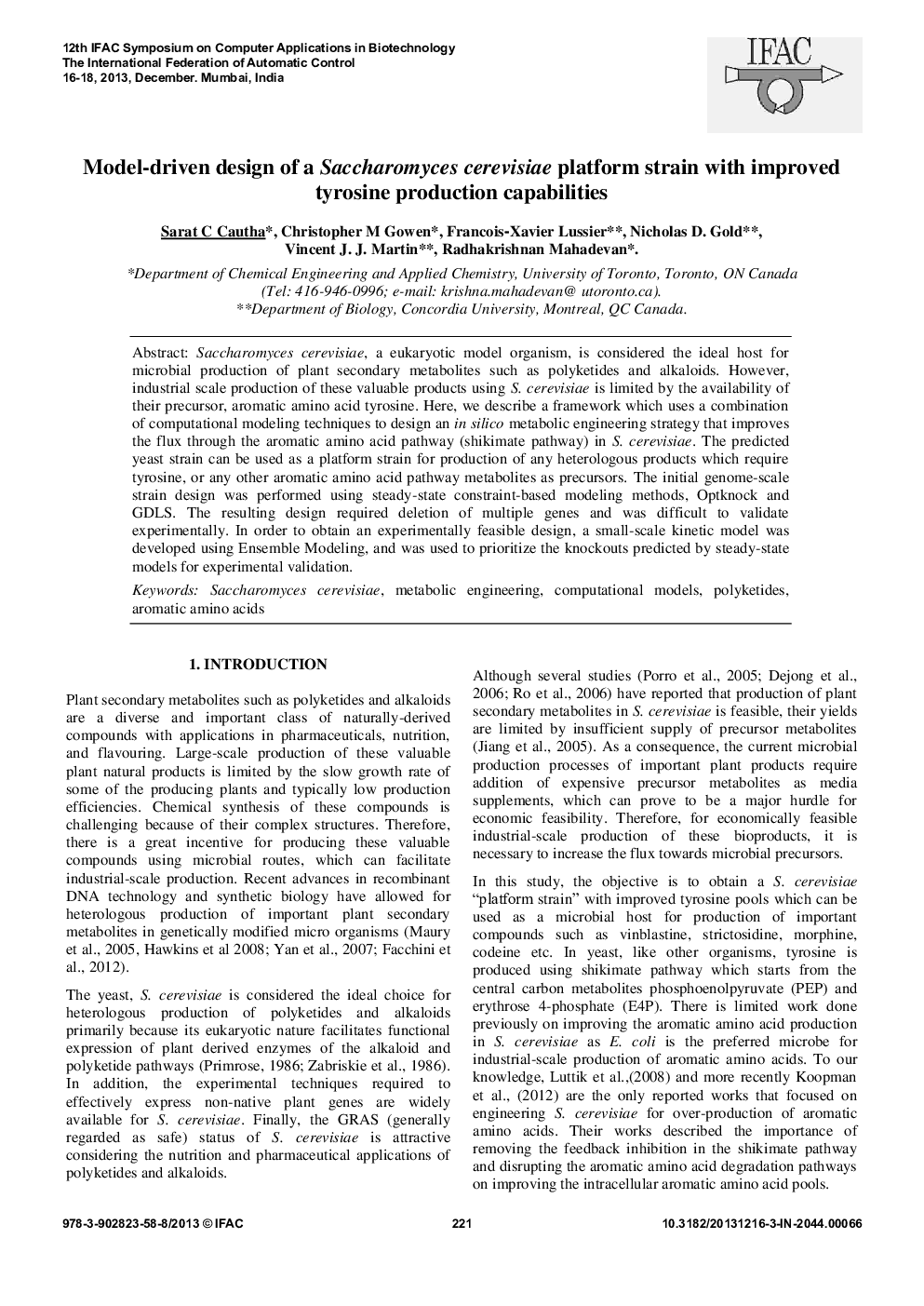| کد مقاله | کد نشریه | سال انتشار | مقاله انگلیسی | نسخه تمام متن |
|---|---|---|---|---|
| 713976 | 892178 | 2013 | 6 صفحه PDF | دانلود رایگان |

Saccharomyces cerevisiae, a eukaryotic model organism, is considered the ideal host for microbial production of plant secondary metabolites such as polyketides and alkaloids. However, industrial scale production of these valuable products using S. cerevisiae is limited by the availability of their precursor, aromatic amino acid tyrosine. Here, we describe a framework which uses a combination of computational modeling techniques to design an in silico metabolic engineering strategy that improves the flux through the aromatic amino acid pathway (shikimate pathway) in S. cerevisiae. The predicted yeast strain can be used as a platform strain for production of any heterologous products which require tyrosine, or any other aromatic amino acid pathway metabolites as precursors. The initial genome-scale strain design was performed using steady-state constraint-based modeling methods, Optknock and GDLS. The resulting design required deletion of multiple genes and was difficult to validate experimentally. In order to obtain an experimentally feasible design, a small-scale kinetic model was developed using Ensemble Modeling, and was used to prioritize the knockouts predicted by steady-state models for experimental validation.
Journal: IFAC Proceedings Volumes - Volume 46, Issue 31, 2013, Pages 221-226